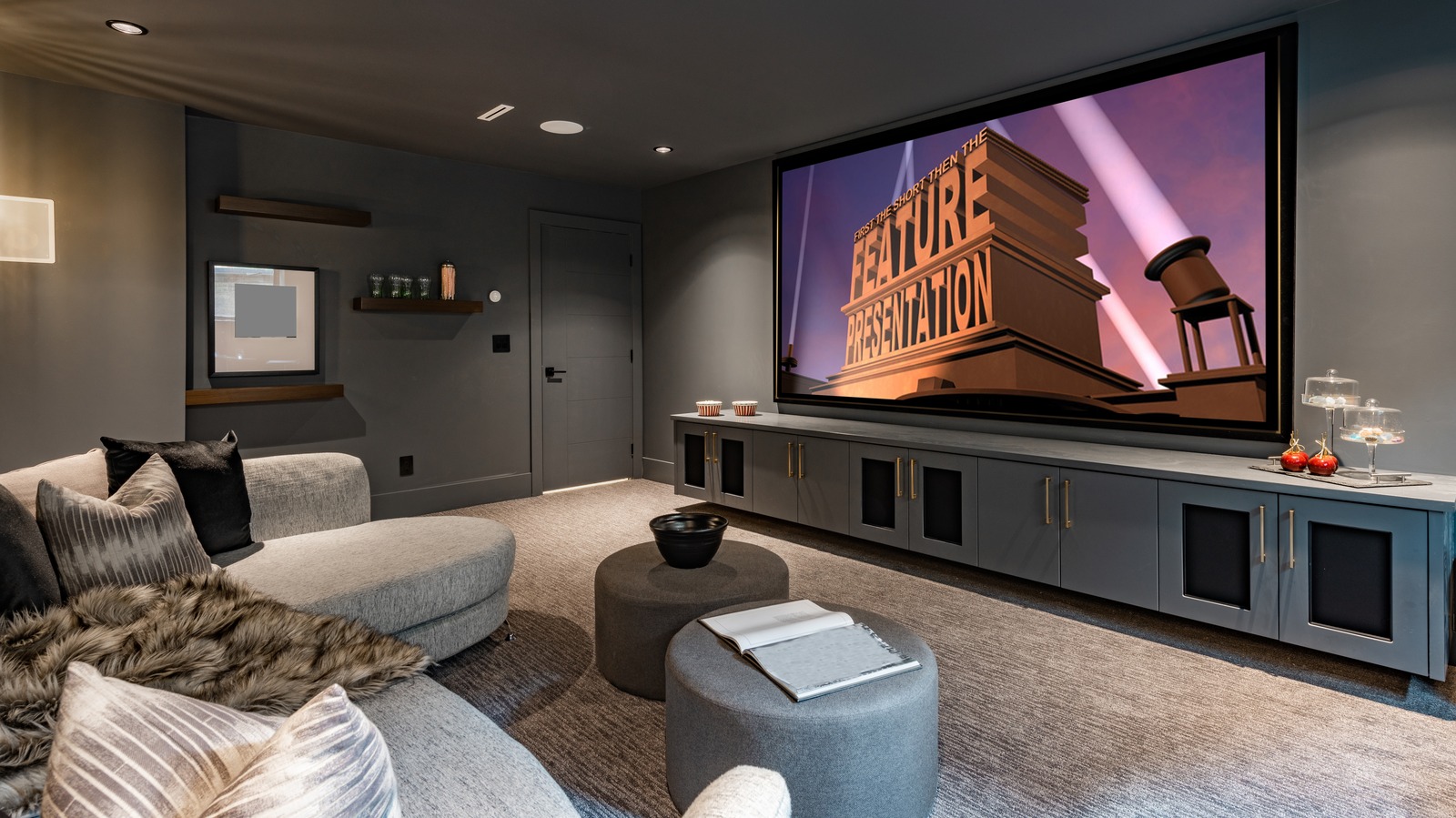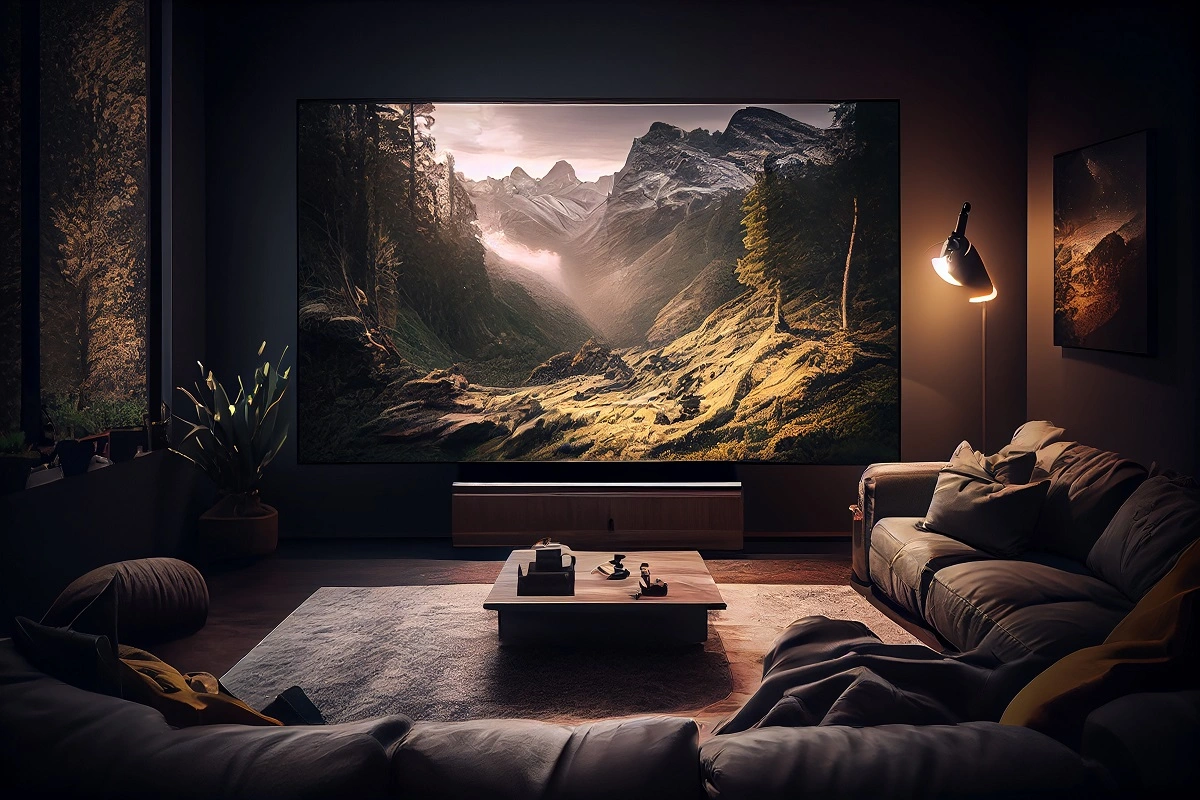Innovative Home Theater Tampa Concepts for the Contemporary Home
Innovative Home Theater Tampa Concepts for the Contemporary Home
Blog Article
Home Theater 101: Every Little Thing You Need to Know for a Cinematic Experience in your home
Developing a home movie theater that measures up to the cinematic experience of an industrial theater includes careful factor to consider of numerous components, including display choice, stereo, and area layout. Each component plays a pivotal function in accomplishing the desired atmosphere and capability. Whether you are pondering the perfect screen size or the complexities of border audio, understanding these principles is important. As we check out these critical elements, it ends up being noticeable that the selections made can dramatically influence your general watching experience, leaving one to contemplate how these choices will certainly shape your individual movie theater.
Selecting the Right Screen
When establishing a home cinema, picking the ideal screen can make or break the viewing experience - home theater design tampa. The display functions as the centerpiece of your setup, affecting picture top quality, seeing angles, and overall visual. Trick elements to take into consideration consist of screen resolution, type, and dimension
Initially, figure out the suitable display dimension based on your room measurements and seating distance. Next, pick between different screen types, such as fixed-frame, mechanized, or retractable displays, each offering distinct advantages.
Resolution is an additional vital element. For a genuinely immersive experience, consider a screen created for 4K or even 8K material, making sure intensity and clarity. In addition, consider the screen's gain, which affects brightness and contrast; a higher gain can improve brightness in well-lit areas, while a lower gain might be extra appropriate for darker settings.
Selecting Audio Equipment
Audio equipment is an essential component of any type of home movie theater system, significantly boosting the overall viewing experience. The option of audio equipment can figure out the depth, clarity, and immersion of sound, important for producing a motion picture atmosphere.
When choosing audio equipment, consider a surround stereo, which usually consists of a receiver, numerous speakers, and a speaker. A 5.1 or 7.1 network system is advised, where the very first number stands for the audio speakers and the second the subwoofer, providing an immersive soundscape. The receiver is the heart of the system, handling audio and video signals, and should support contemporary styles like Dolby Atmos for an enhanced spatial experience.
Quality speakers are vital; try to find designs that provide a well balanced noise profile with good bass response. Floor-standing speakers can create richer audio, while bookshelf alternatives conserve area. Furthermore, think about cordless options for convenience of setup, although wired systems frequently provide exceptional efficiency.

Ideal Seating Plans
Developing an excellent home cinema experience hinges substantially on optimum seating plans. The plan of seats plays a vital duty in both convenience and seeing high quality, directly affecting the total motion picture experience.
First, think about the display dimension and checking out distance. A common guideline is to position seats at a range about 1.5 to 2.5 times the angled size of the screen. This makes certain an immersive experience without stressing the eyes.
Next, altitude is crucial. If your seating remains in a tiered style, the back rows should be higher than the front to avoid blockages. For flat seating, make sure that the front row is not too near to the display, and that every person has a clear line of view.
In addition, take into consideration the plan in regards to social characteristics. Group seating can boost the common experience, while private seats may be favored for personal viewing.

Last but not least, prioritize convenience with ergonomic seats that sustains extended viewing durations. Including recliners or supported seats can significantly improve the experience, making the home movie theater a favored location for both home entertainment and leisure.
Lighting and Setting
Effective illumination and setting are vital components of a properly designed home theater, as they substantially affect the checking out experience. The best illumination can boost the cinematic feel, while inadequate choices can diminish it. For ideal outcomes, think about a split look at here now lights approach that consists of ambient, job, and accent lighting.
Ambient illumination offers general illumination, ensuring that the room is not totally dark, which can strain the click site eyes. Dimmer buttons are extremely advised, permitting adjustments based upon the web content being checked out. Task illumination, such as wall surface sconces or floor lights, offers practical illumination for activities like reading or navigating the room without disrupting the overall environment.
Accent illumination can be made use of to highlight architectural functions or produce centerpieces, adding depth and interest to the space. LED strip lights behind displays or along racks can give a subtle radiance that enhances the aesthetic experience without overwhelming the visitor.

Wiring and Installation Tips
A tactical wiring arrangement is critical for achieving optimum performance in your house theater system. Correct wiring not only ensures premium audio and video signals however also enhances the overall visual of your area. Begin by mapping out your layout, recognizing where each element will be positioned, including your screen, audio speakers, and receiver.
When picking cords, focus on premium, properly determined electrical wiring to lower signal loss. HDMI cable televisions must be made use of for video links, while audio speaker cord ought to match the specifications of your audio speakers and amplifier. Decide for in-wall rated cords to abide by security criteria and preserve a tidy appearance.

Final Thought
In summary, creating a phenomenal home movie theater experience needs mindful factor to consider of numerous elements, consisting of display option, audio equipment, seating arrangements, illumination, and wiring. By prioritizing these aspects, a motion picture ambience can be efficiently duplicated, permitting for immersive watching experiences that measure up to conventional theater setups.
Developing a home movie theater that measures up to the motion picture experience of an industrial theater includes mindful consideration of several components, consisting of display option, sound systems, and space format.When setting up a home cinema, choosing the best display can make or damage the viewing experience. Next, select between numerous screen types, such as fixed-frame, motorized, or retractable screens, each offering distinct benefits. For a truly immersive experience, take into consideration a screen designed for 4K or also 8K content, ensuring sharpness and quality.In summary, creating an outstanding home theater experience calls for careful consideration of different aspects, including screen option, audio devices, seating plans, lighting, and wiring.
Report this page